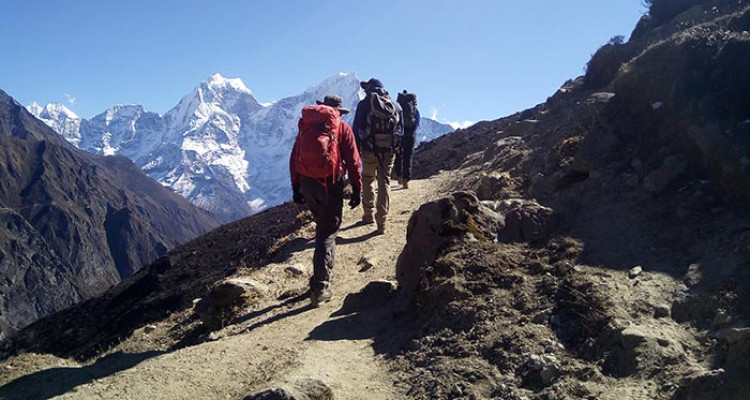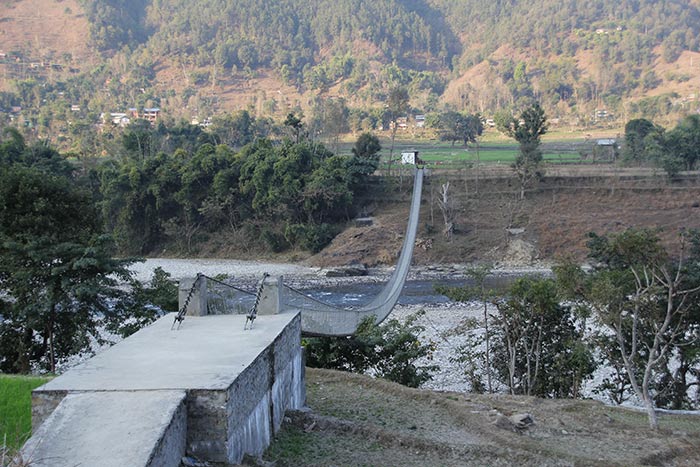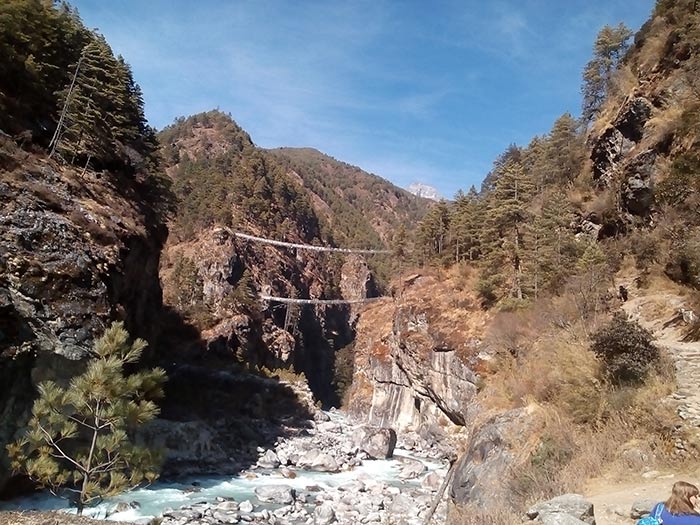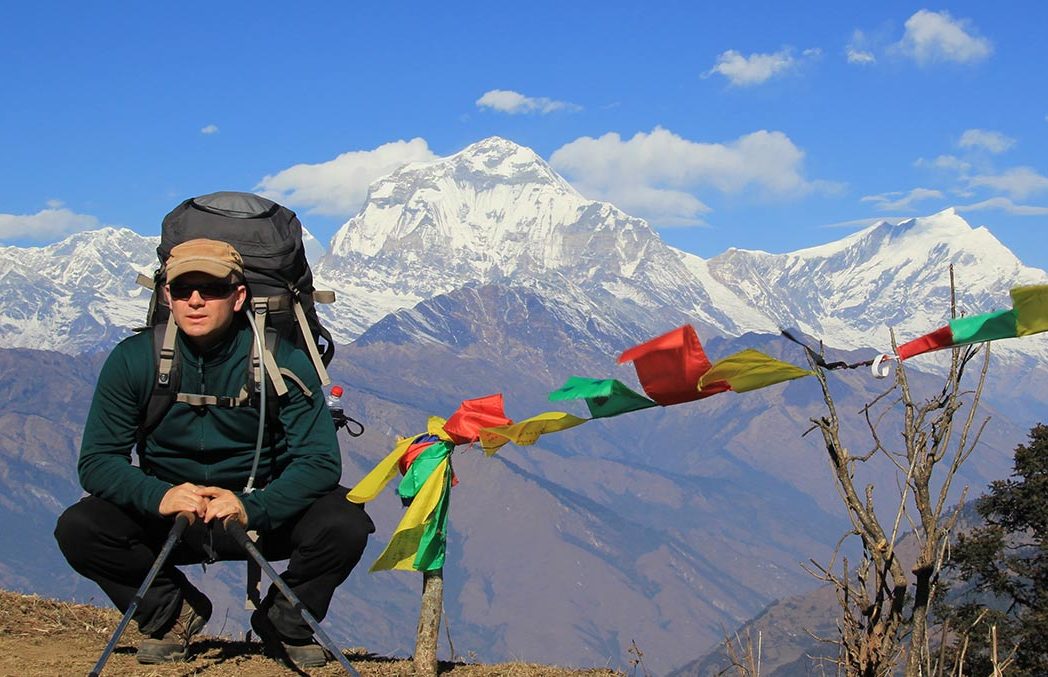August 3, 2018

Nepal, a small country located in South Asia, is famously known for being the home of Mt. Everest and the Great Himalayan Trails. The Great Himalayan Trails are extensive and stretch from West Humla & Darchula to the East Kanchenjunga. Nepal is a popular tourist destination in Asia, with towering mountains and cultural sites being major attractions. Moreover, Nepal is home to many rare biodiversities that cannot be found anywhere else in the world. The country offers a range of tourist activities, including trekking in the Himalayas and cultural tours.

Nepal’s lowest point is only 60 meters above sea level, while the highest point is 8,848 meters (Mt. Everest). Surprisingly, these two points are only 200 kilometers apart in a straight line. Every day, a large number of trekkers visit Nepal via the Tribhuvan International Airport or the Sunauli border with India. Trekking permits can be obtained from the permit office at Damside in Pokhara for the Annapurna region. If you have a trekking agency with you, they can assist you in obtaining permits, but it is easier to book your trip through a local travel agency. During your trek, you will be required to show authorized permits at various checkpoints for safety and to show respect for the country.
Trekking is the main attraction for tourists visiting Nepal, and the duration of their trek can be customized based on the time they have available. There are treks ranging from a few days to as long as a month.
Before Sir Edmund Hillary and Tenzing Norgay climbed Mt. Everest in the 1950s, the trekking industry in Nepal was not well established. As more climbers visited the Everest region, the tourism industry began to grow slowly. Today, trekking in Nepal is a completely different experience than it was in the 50s. There are many facilities available for trekkers, including well-maintained walking paths, accommodations in villages along the way, permits for conservation areas, and opportunities to interact with people from various backgrounds.
Accommodations are well-chosen, and electrical devices can be charged at every tea house or lodge. In addition, WiFi services are available in major trekking areas. There are some off-road constructions that are not suitable for trekking in Nepal, but if trekkers can handle alternative walking paths, the tourism industry can remain stable and continue to grow.
There are four major trekking regions in Nepal that are easily accessible: Everest, Annapurna Circuit, Poon Hill, Manaslu, and Langtang. The Everest region is the most popular, with 500 to 600 trekkers visiting every day in October and November. Trekkers are rewarded when they venture into these regions with breathtaking views of the Himalayas and diverse landscapes.

Nepal boasts a variety of trekking routes, with the Everest region being the most popular and sought-after destination. The Annapurna and Langtang regions are easily accessible by road, allowing for shorter itineraries. However, trekking in the Everest region requires either a 14-hour bus ride or a flight, adding an additional five days to the itinerary. Adventurous trekkers who venture further afield can explore the great Himalayan trails, including Dolpo, Kanchenjunga, Makalu, and the remote western region of Nepal. While treks in the mid-part of Nepal, such as Annapurna and Manaslu, can be reached within a few days, treks to the remote restricted areas are far from the center but accessible by domestic flights.
Nepal is also home to six distinct vegetation zones, ranging from tropical to alpine, each rich in diverse flora and fauna. Though some rarer examples may be difficult to spot, the appropriate vegetation is well-populated in each zone.

Two domestic flights may be necessary to reach the start of a trek, and since domestic flights usually take place early in the morning, sufficient time should be allowed for this. Although popular treks in areas such as Kanchenjunga, Everest, Manaslu, and Annapurna offer lodge accommodation, less frequently visited treks in these areas and those to the west of Annapurna usually require camping-style trek support.
If you plan to trek along the Great Himalayan Trail in southern Nepal, be aware that this area receives heavy rainfall during the monsoon season, which lasts about three months from June to August. It is advisable to avoid trekking during this time. Additionally, the Great Himalayan Trail is a challenging and lengthy trip, so careful preparation is necessary. The southern part of Nepal is generally damp, while the north is dry due to its high altitude. Two popular trekking regions in the north of the Great Himalayan Trail are the Annapurna Base Camp, Annapurna Circuit, and Manaslu Trek.
If you are planning a holiday in Nepal, it is best to schedule it during the autumn season (September to November) when the weather is dry and clear after the monsoon. The lush green landscapes are especially scenic during this time, and some of the most popular Hindu festivals also occur during the autumn season.
In contrast, most of the northern part of Nepal is dry, with only a few periods of rain during the monsoon season from June to August. This means that the lower Himalayan loops are generally dry and unable to support much vegetation throughout the year. The landscapes and people in these areas are similar to Tibet, as many Tibetan people migrated to Nepal a long time ago.

When traveling in Nepal, particularly in remote Himalayan regions, it is important to understand that tourism is the main source of income for local villagers. By hiring a local guide or porter, you are not only valuing their work, but also gaining a deeper insight into the region’s culture and history. They can show you the hidden gems and take you to places you might not have discovered otherwise.
While it is possible to trek around Nepal without a guide or porter, it is important to be knowledgeable about the region you plan to trek, including the security of the area, available lodges, food, permits, and local entrance fees. Hiring a guide or porter can help ensure that you have a safe and enjoyable experience.
The Great Himalayan Trail is the highest and longest natural trekking path on Earth, stretching from the shadow of Mt. Everest in the east to the west. This trip offers an incredible adventure for those who love trekking and exploring. The trek provides stunning views of high mountains, green rolling hills, and lush valleys.
Some of the key facts about the Great Himalayan Trail include that it was formally declared in 2008 and 2009 after a team led by Robin Boustead walked from east to west Nepal, taking 157 days to complete. The trail is about 4,500 km long, stretching from Myanmar, Tibet, Bhutan, India, Pakistan, and Nepal. There are 19 high passes to cross, and approximately 1,700 km of the trail lies in Nepal.
The Great Himalayan Trail aims to promote tourism in Nepal and the entire Himalayan region, while also contributing to local and hidden communities. It offers an opportunity to observe local cultures, traditions, and communities, and the lower cultural route of the trail provides a chance to see lush forests, paddy terrace fields, pastures, and other natural wonders. The UKAID supports Nepal financially and intellectually for the tourism industry, NGOs, and related villages to make sure that the trail is developed into an important new product for the Nepal tourism industry, while also supporting responsible tourism practices, creating job opportunities for locals, and preserving nature and heritage.
If you plan to trek the Great Himalayan Trail, it is recommended to avoid the monsoon season (June to August) and consider visiting in the autumn season (September to November), which is a dry season and offers clear weather and lush green views. By hiring a local guide or porter, you can have a meaningful trekking experience and contribute to the local economy.